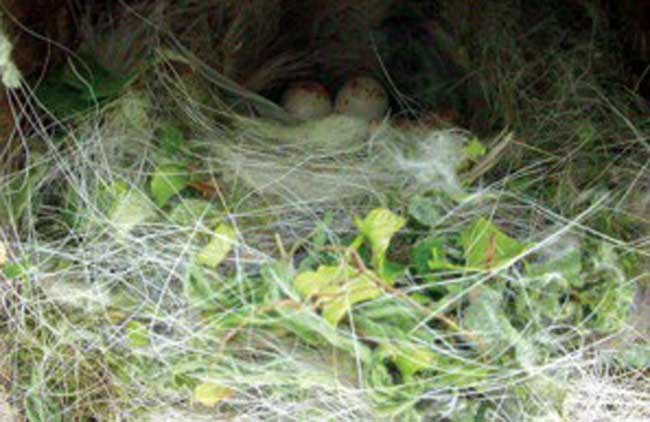Birds Line Nests with Natural Antibacterials

Some birds add bits of aromatic plants, such as lavender, mint, or yarrow, to their nests. The garlands serve not as air fresheners or décor, but rather, it is thought, as pesticides against such parasites as fleas and blowfly larvae, which commonly vex chicks. Yet various experiments have failed to confirm that quite reasonable idea. Now Adèle Mennerat, her former graduate adviser Marcel M. Lambrechts of the National Center for Scientific Research in Montpellier, France, and several colleagues say scientists may have been off track—bacteria could be the targeted affliction.
Every year in the Fango Valley of Corsica, a population of blue tits nest in boxes set up just for them. Each day during the 2005 nesting season, Mennerat removed the birds’ freshly added greenery from forty boxes, and replaced it with either a standard mix of aromatic herbs or inert moss. When chicks were two weeks old, she pressed agar slides onto their flanks to sample the bacteria growing there. Fewer bacterial species were living on chicks from boxes with herbs than on chicks from boxes without.
In a separate study, the group found that aromatics improve chick growth and health, even though they don’t affect the number of blowfly larvae infesting the nests. Heavy bacterial loads could lead to disease—hence the bactericidal herb bouquets. The heady scents and pretty swag are just bonuses.
The findings were detailed in the Journal Oecologia.
This article was provided to LiveScience by Natural History Magazine.
Sign up for the Live Science daily newsletter now
Get the world’s most fascinating discoveries delivered straight to your inbox.









